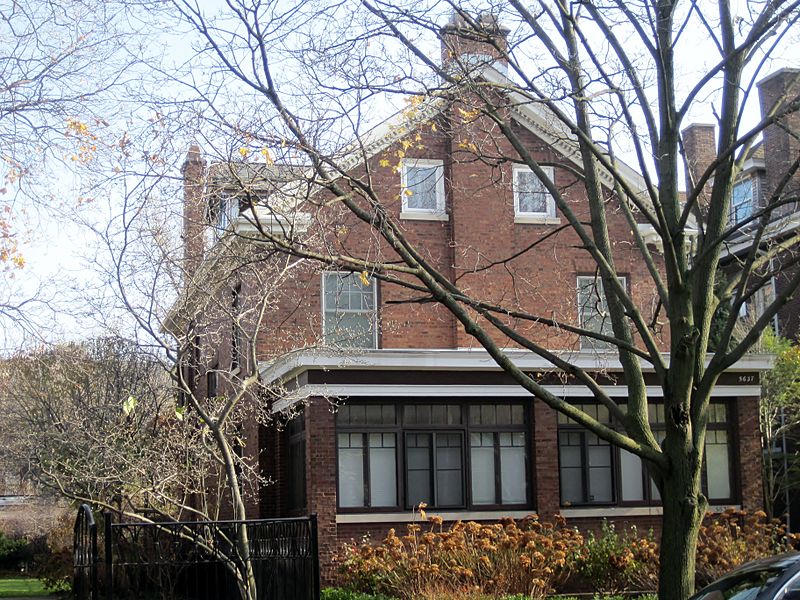Image: Arthur H. Compton House (7373049818)

Description: The Arthur H. Compton House in Chicago, a national landmark (1916). Compton was born in Ohio as the son of the dean of the College of Wooster. Arthur Compton earned his Ph.D. from Princeton, just like his other two brothers. Compton is best known for Compton scattering, which demonstrated the particle aspect of electromagnetic radiation. He fired X-rays at a known wavelength at atoms to observe the effect on wavelength. If light was indeed a particle, then the wavelength would inevitably change upon contact with the atom. Indeed, scattered rays had a larger wavelength than the initial X-ray, since the atom absorbed some of the momentum. He was able to devise a formula to predict the change in wavelength based on the rest mass of the electron, establishing the Compton wavelength (2.426 x 10^-12 m for the electron). Compton won the Nobel Prize for Physics in 1927. He began to teach at the University of Chicago two years later. In 1941, Compton was tasked with the S-1 Uranium Committee, which later evolved into the Manhattan Project. Compton wanted to isolate plutonium at Chicago, a plan that immediately sprang into motion after the attack on Pearl Harbor. He organized the Metallurgical Laboratory, the top-secret lab at Chicago. In September 1942, plutonium was isolated, and in December, a team led by Enrico Fermi sustained a chain reaction in the world's first nuclear reactor. After the nuclear bomb was assembled in 1945, Compton advocated for its use against Japanese cities. This is an image of a place or building that is listed on the National Register of Historic Places in the United States of America. Its reference number is 76000687.
Title: Arthur H. Compton House (7373049818)
Credit: Arthur H. Compton House Uploaded by AlbertHerring
Author: Teemu008 from Palatine, Illinois
Usage Terms: Creative Commons Attribution-Share Alike 2.0
License: CC BY-SA 2.0
License Link: https://creativecommons.org/licenses/by-sa/2.0
Attribution Required?: Yes
Image usage
The following page links to this image:

